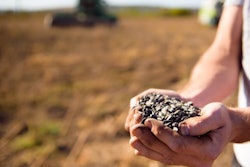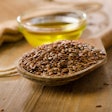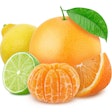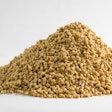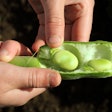
Find out what raw materials will make the news this year
With every new year, we begin with expectations, and the animal nutrition industry that I serve is not an exception. Below is my personal list of raw materials that I believe will make the news in 2023.
-
Algae
Seaweeds or algae is a term that is equivalent to terrestrial plants, so it encompasses thousands of species. Classifying algae as macro or micro is a first attempt to start understanding the plethora of such sea organisms. Also, macro algae that are referred to as brown, red and green are another attempt at classification, that is at least interesting. Nevertheless, the sea world remains largely unexplored, or rather unexploited, and algae continue to strive to make an entry into the animal nutrition business.
-
Insects
This heavily marketed technology has an unclear future as it is driven by forces that are not based purely on market economics. That certain species can consume products derived from insects has been known for a long time. The newfangled trend to consume insects as the main dish can be seen as an emerging technology that goes along with other similar activities of our times. Whether consumers will accept animal foods from animals fed on insects remains a question. At the moment, this whole business remains at the pilot stage, in most cases, with a few notable exceptions.
-
Sorghum
With severe droughts hitting the EU and U.S. in 2022, many farmers are considering a future with diminishing water reserves. Whether this harsh drought was a one-off event or something we will be experiencing often remains to be seen. In the meantime, to my knowledge, farmers in both regions are looking into sorghum as a resource-saving ingredient. Sorghum is a C4 plant, and as such, it requires ample sunlight, just like corn. But, in contrast with corn, sorghum has better yields in more sandy soils and with little or no irrigation. We expect animal producers to have a viable alternative in the form of sorghum, worldwide, sooner rather than later.
-
Linseed
This is a raw material as old as Egyptian mummies (at least), but it makes a comeback as a source of omega-3 fatty acids. It contains many other underestimated components that can help in gut health, immunity, and many other functions. Interestingly, linseed oil is seen with a different eye in ruminant rations compared with other sources of fats and oils based on the latest NRC publication about beef. In most cases, we expect an increase in availability of extruded linseed products as raw linseed should not be fed to animals.
-
Animal proteins
This mostly concerns the EU, where processed animal proteins (PAP) have been re-allowed. PAP stands for the good old meat and bone meal or just meat meal because we cannot have just proteins, but it is another fad to call meat “protein,” forgetting the many other nutrients we get from it. This is a folly, in the opinion of some, that may come back to haunt us in the form of lab-grown protein meat. At any rate, the animal nutrition industry in the EU is still unsure how to take advantage of PAP as knowledge on how to use this raw material has largely “retired.”
-
Soybean meal
Last, but not least, soybean meal will see a huge increase in volume due to the decision of the U.S. government to lean heavily on biodiesel – another modern issue not driven by animal nutrition concerns. So, with a bonanza of cheap soybean meal, we expect to see higher consumption by animals worldwide as this raw material will compete not only on price with synthetic amino acids, but it will bring back to the animal rations complimentary nutrients that are missing in very low-protein diets.
Happy new year!

